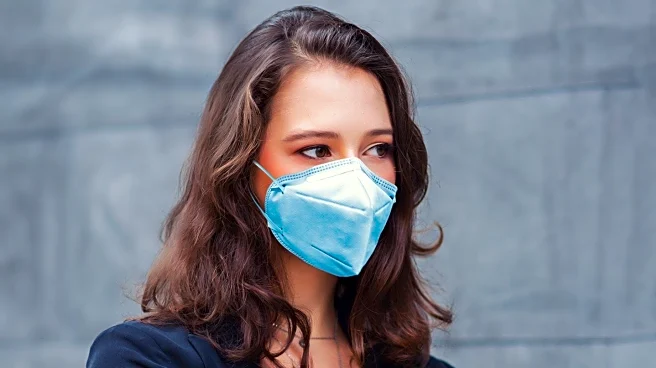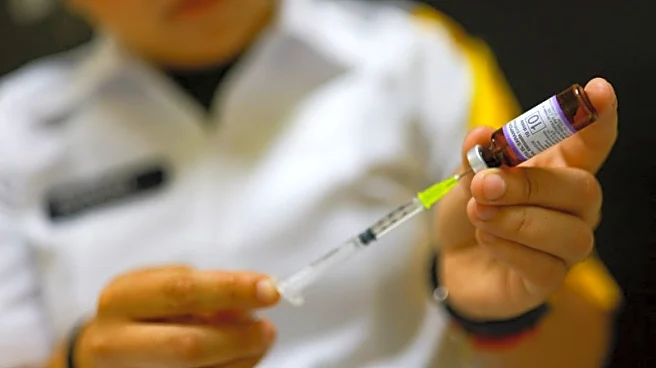What is the story about?
What's Happening?
The Centers for Disease Control and Prevention (CDC) has announced significant changes to its vaccination recommendations for COVID-19 and chickenpox. The CDC now advises that children under four should receive separate vaccines for chickenpox and the combined measles, mumps, and rubella (MMR) instead of the previously recommended single MMRV shot. This change follows recommendations from the Advisory Committee on Immunization Practices (ACIP), whose members were recently replaced. The CDC also lifted its universal recommendation for COVID-19 vaccines for adults under 65, suggesting instead that vaccination decisions be made on an individual basis in consultation with healthcare providers. These changes have been met with criticism from medical groups, including the American Academy of Pediatrics, which expressed concerns about the increased risk of febrile seizures with the MMRV vaccine.
Why It's Important?
The CDC's updated recommendations could have significant implications for public health policy and vaccine administration in the United States. By shifting to a more individualized approach for COVID-19 vaccinations, the CDC is potentially altering the landscape of vaccine uptake and public health strategy. This move may lead to increased vaccine hesitancy or confusion among the public, as healthcare providers and patients navigate the new guidelines. The decision to separate the chickenpox vaccine from the MMRV shot could also impact vaccination schedules and coverage rates, particularly if parents opt out of one or more vaccines. The changes highlight ongoing debates about vaccine safety and efficacy, as well as the role of federal agencies in guiding public health practices.
What's Next?
The CDC's new recommendations are likely to prompt further discussion and analysis among healthcare providers, policymakers, and the public. Medical organizations and advocacy groups may continue to voice their concerns or support for the changes, potentially influencing future policy adjustments. Healthcare providers will need to adapt to the new guidelines and communicate effectively with patients about the risks and benefits of vaccination. Additionally, the impact of these changes on vaccination rates and public health outcomes will be closely monitored, with potential adjustments made based on emerging data and feedback from the medical community.
AI Generated Content
Do you find this article useful?














